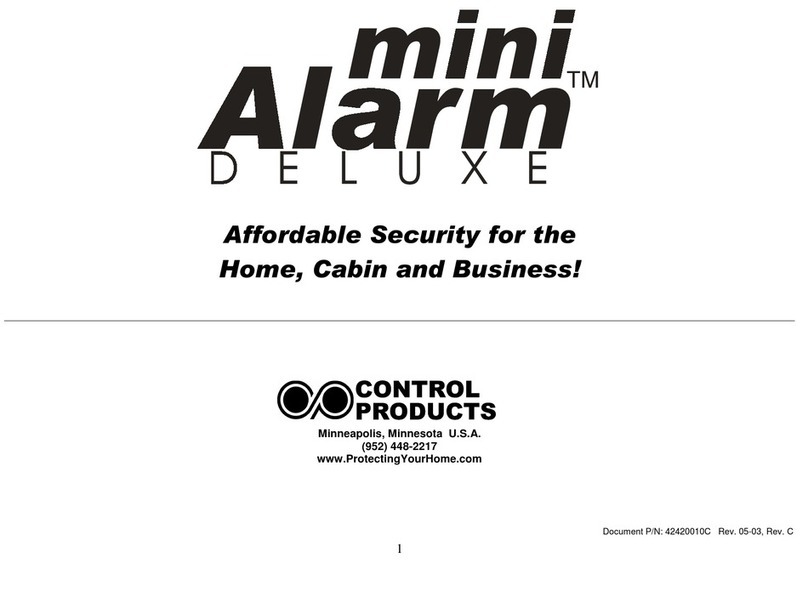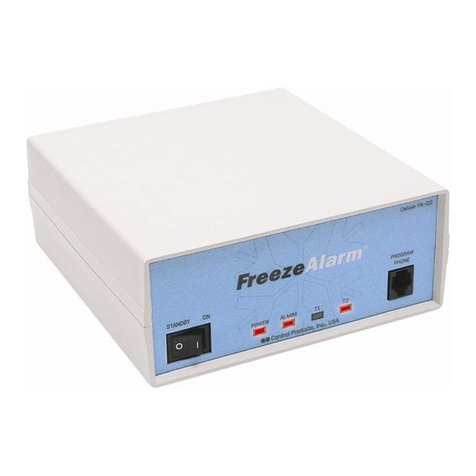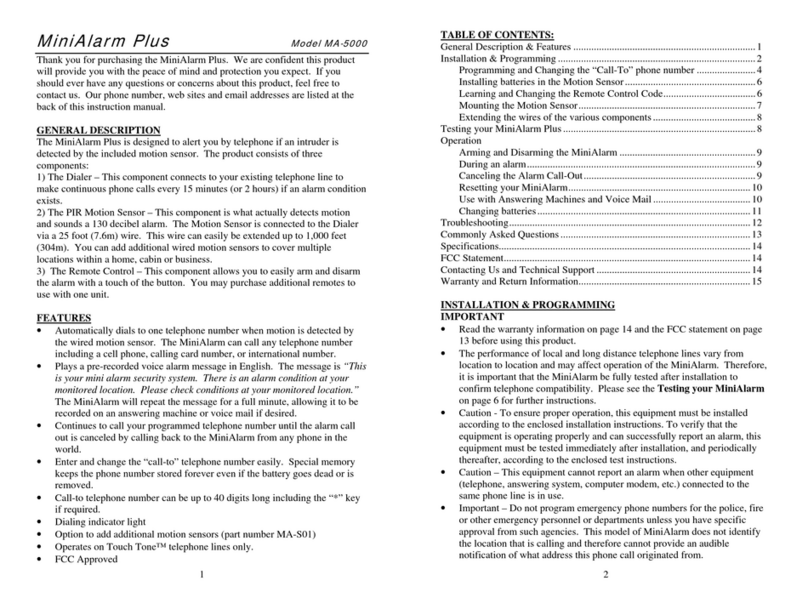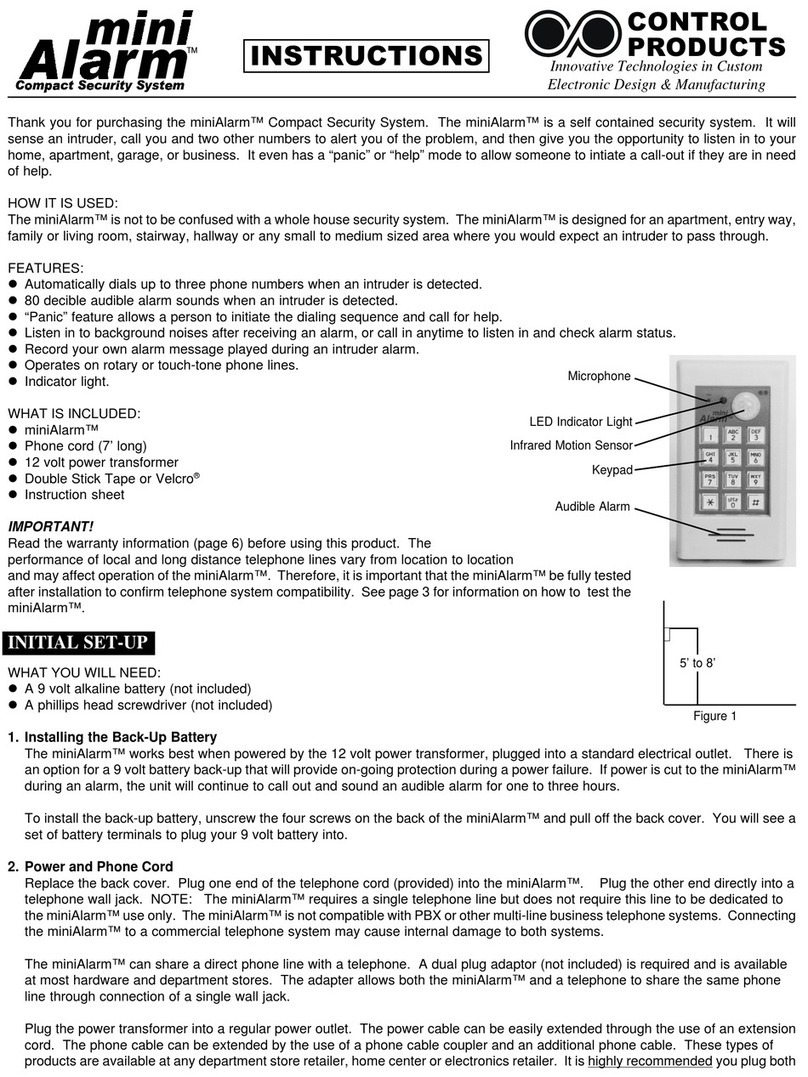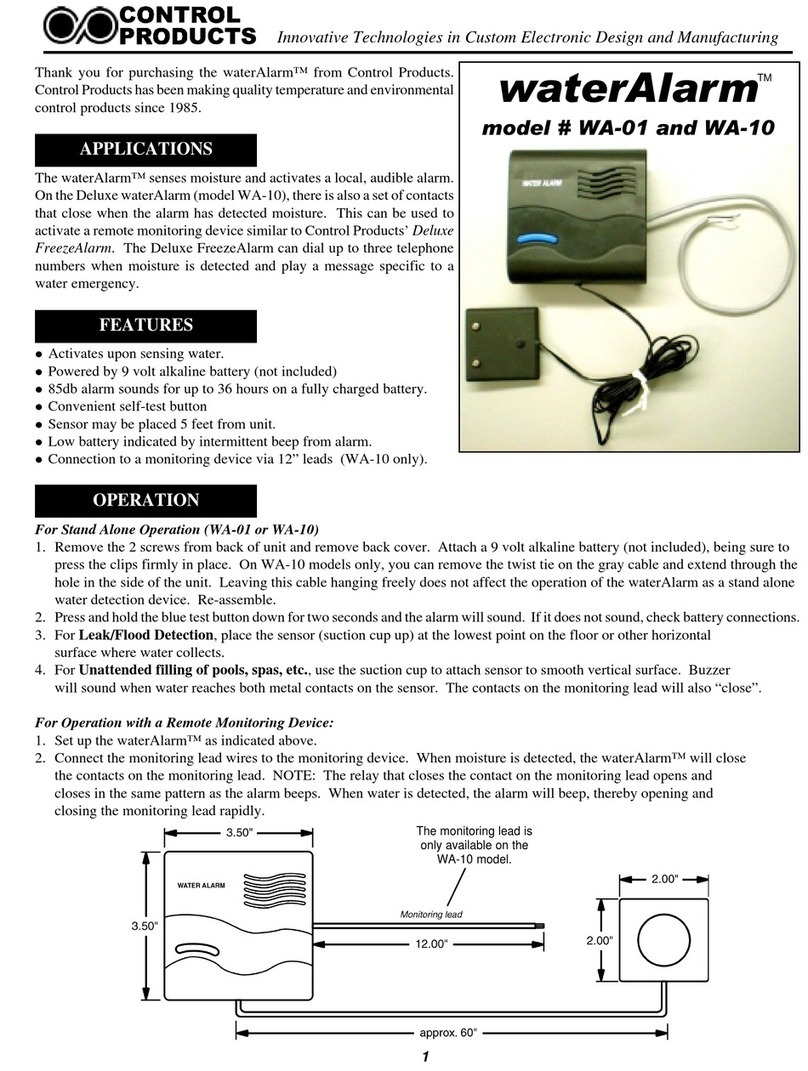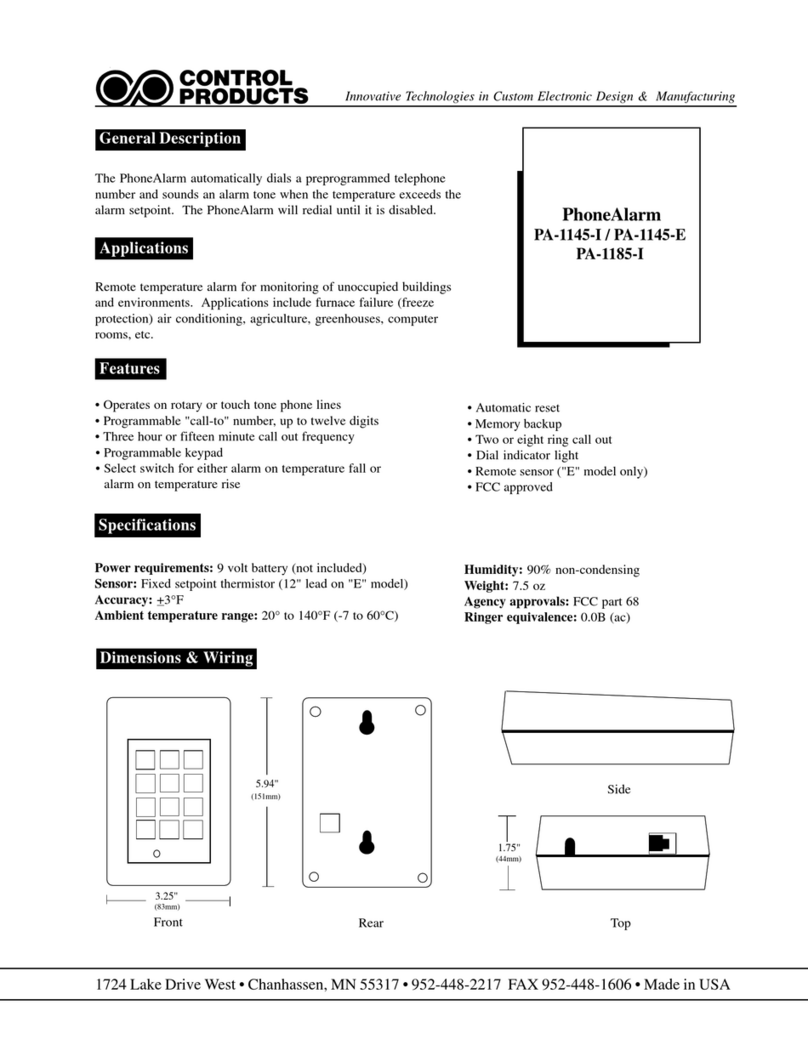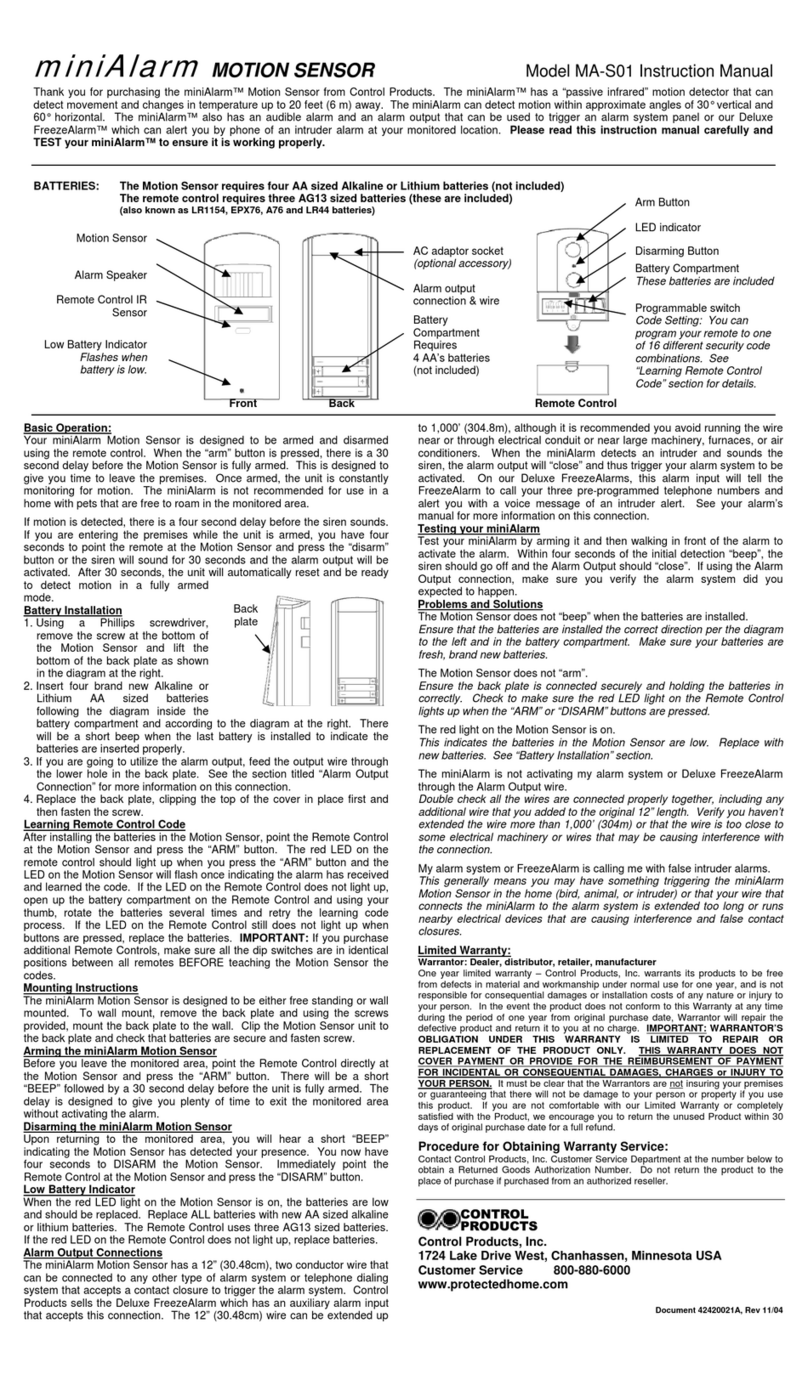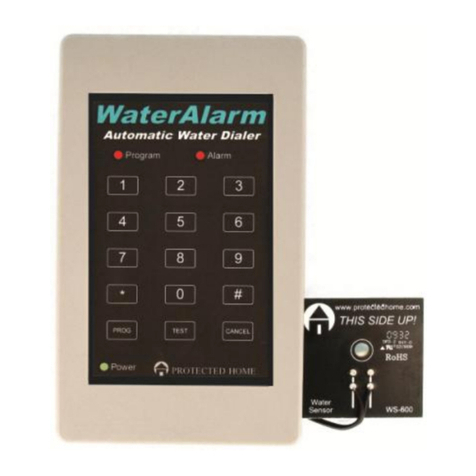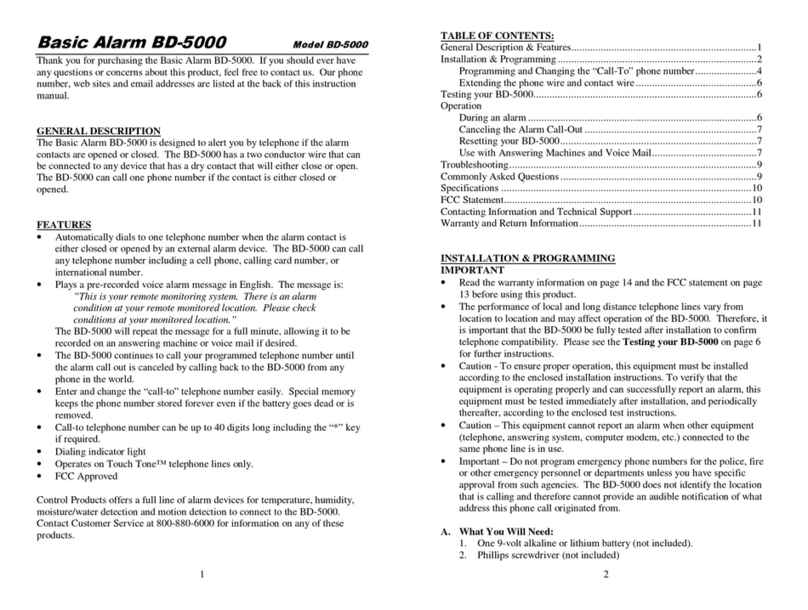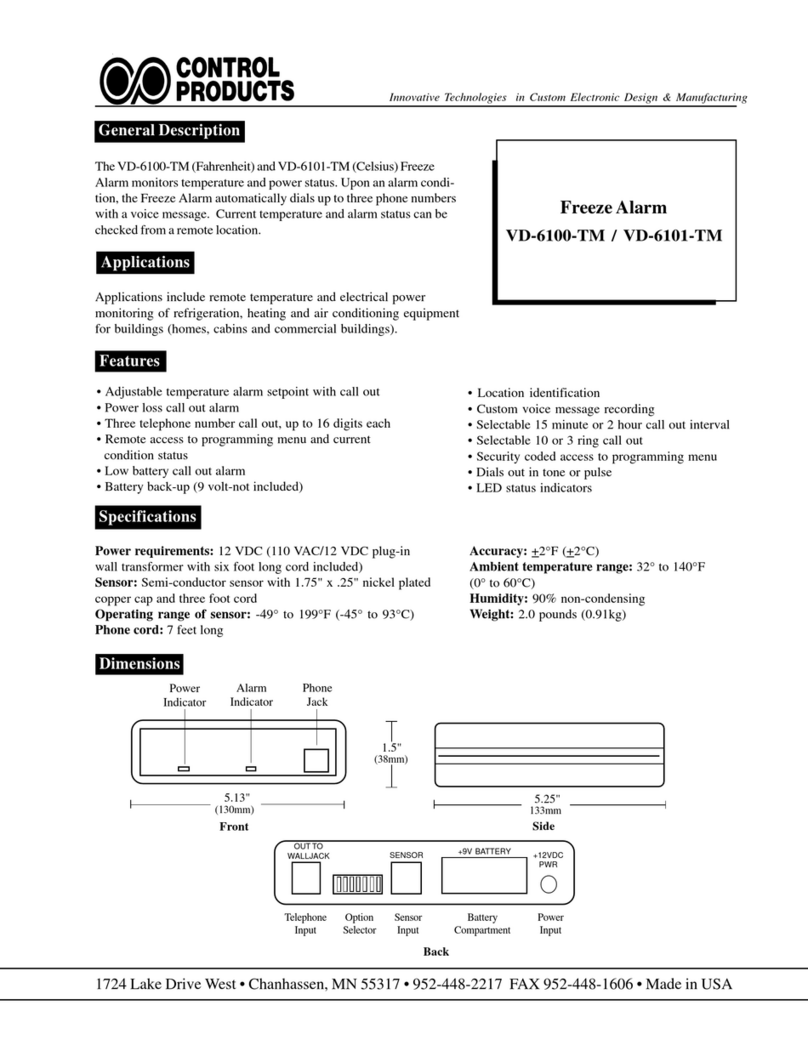
1.0 INITIAL SET-UP:
BEFORE YOU PROCEED - Please read the entire warranty statement in this manual.
1.1 Operating Environment
The Wireless WaterAlarm Base Station should be located in a dry, clean area that is
near an AC power outlet and a telephone wall-jack. The Wireless WaterAlarm is
designed to operate in temperatures from 20° to 140°F (-7° to 60°C). You should not
install the Wireless WaterAlarm in areas where there is strong electrostatic,
electromagnetic or radioactive fields. Do not install the Wireless WaterAlarm in an
area with high humidity, chemical fumes or corrosive vapors. Never install or connect
your Wireless WaterAlarm during a lightning storm!
1.2 What you need before you start
Before proceeding, make sure you have the following ready:
1. One 9 volt alkaline or lithium battery for back-up power for the base station.
2. Two AA alkaline batteries for the wireless water sensor.
3. Recommended, but not required is a high quality surge suppressor that protects
the power line as well as the telephone connections. These are available from
all hardware stores, department stores and directly from Protected Home.
4. Three phone numbers the Wireless WaterAlarm will dial during a water,
power or battery emergency. These phone numbers are referred to as call-to
telephone numbers throughout this manual. You do not need to program three
phone numbers if desired. You can program one or two phone numbers or
even program the same phone number in all multiple positions if desired.
5. You will need access to a single line telephone jack. The Wireless
WaterAlarm will not interfere with the normal use of your telephone line. The
Wireless WaterAlarm will operate with all standard telephone systems that
accept either pulse or tone dialing. Some business telephone systems or PBX
telephone systems may not work with the Wireless WaterAlarm. In those
cases, a dedicated, single telephone line will be required. Consult the supplier
of your phone system if you encounter problems or have questions. The
Wireless FreezeAlarm cannot be used on a party line or a pay telephone line.
It is extremely important that you test your Wireless WaterAlarm as
outlined in Section 2.5.
6. You will need a standard telephone to program your Wireless WaterAlarm
using the front Programming Phone jack. Most cordless phones will work, but
if you encounter problems, use a wired phone or program your Wireless
WaterAlarm remotely by dialing into it using a cell phone or a phone from
another location. After programming is completed, unplug this phone from
the Wireless WaterAlarm.
7. If you wish to use one telephone jack for both the Wireless WaterAlarm and a
regular telephone, you will need to purchase a dual telephone jack line splitter.
This will turn a single telephone jack on your wall into two separate telephone
jacks to plug in both the Wireless WaterAlarm and a regular single line
telephone. These are available from any hardware or discount department
store or directly from Protected Home.
